Tucked into the southeastern shoreline of São Miguel, Ribeira Quente is small, bright, and curiously shaped by heat. The road that winds down into town curves past ferns, farms, and volcanic slopes. And then, almost suddenly, you arrive: a port, a beach, a few sun-washed buildings, and the subtle scent of salt and thermal earth.
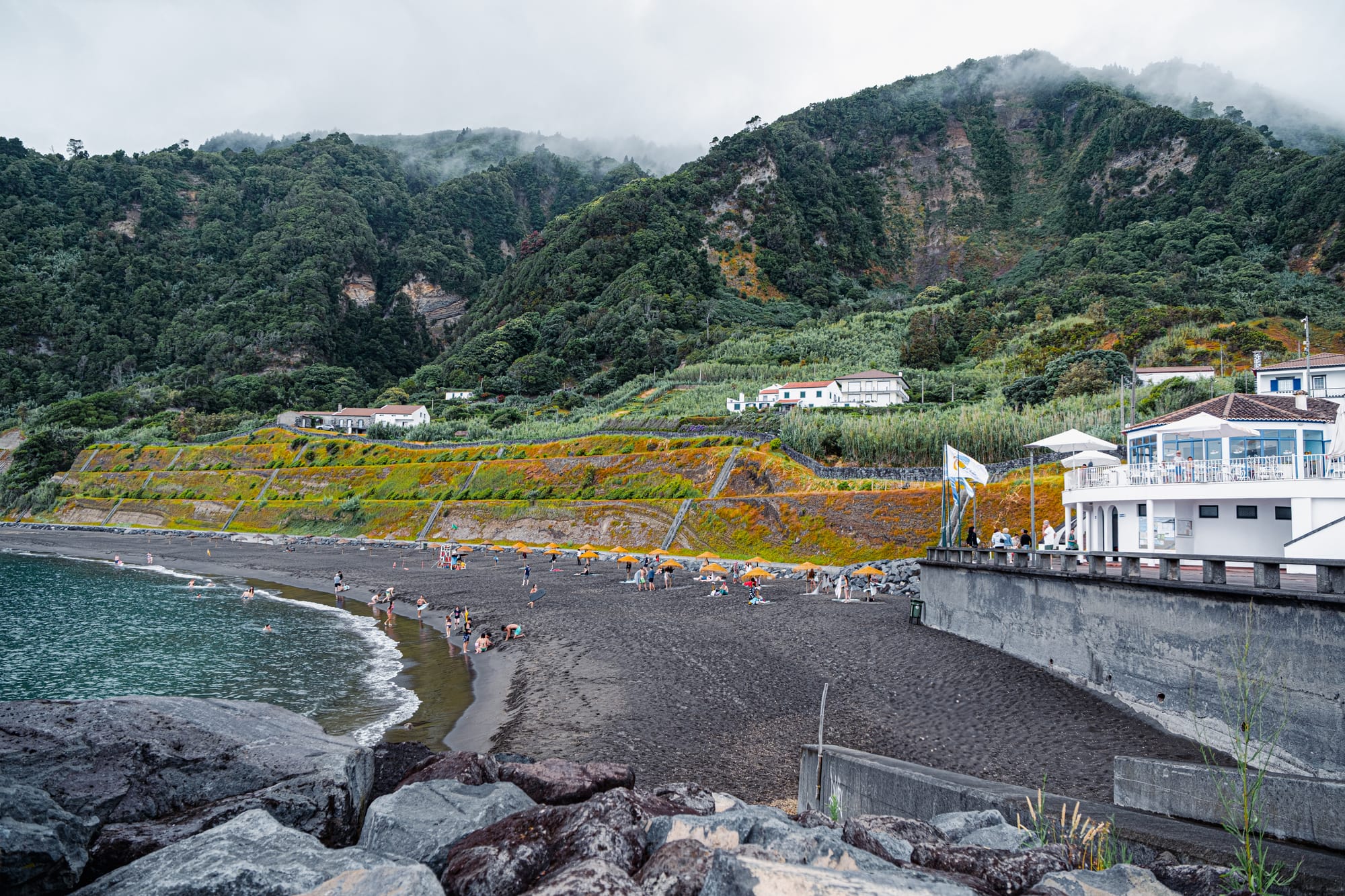
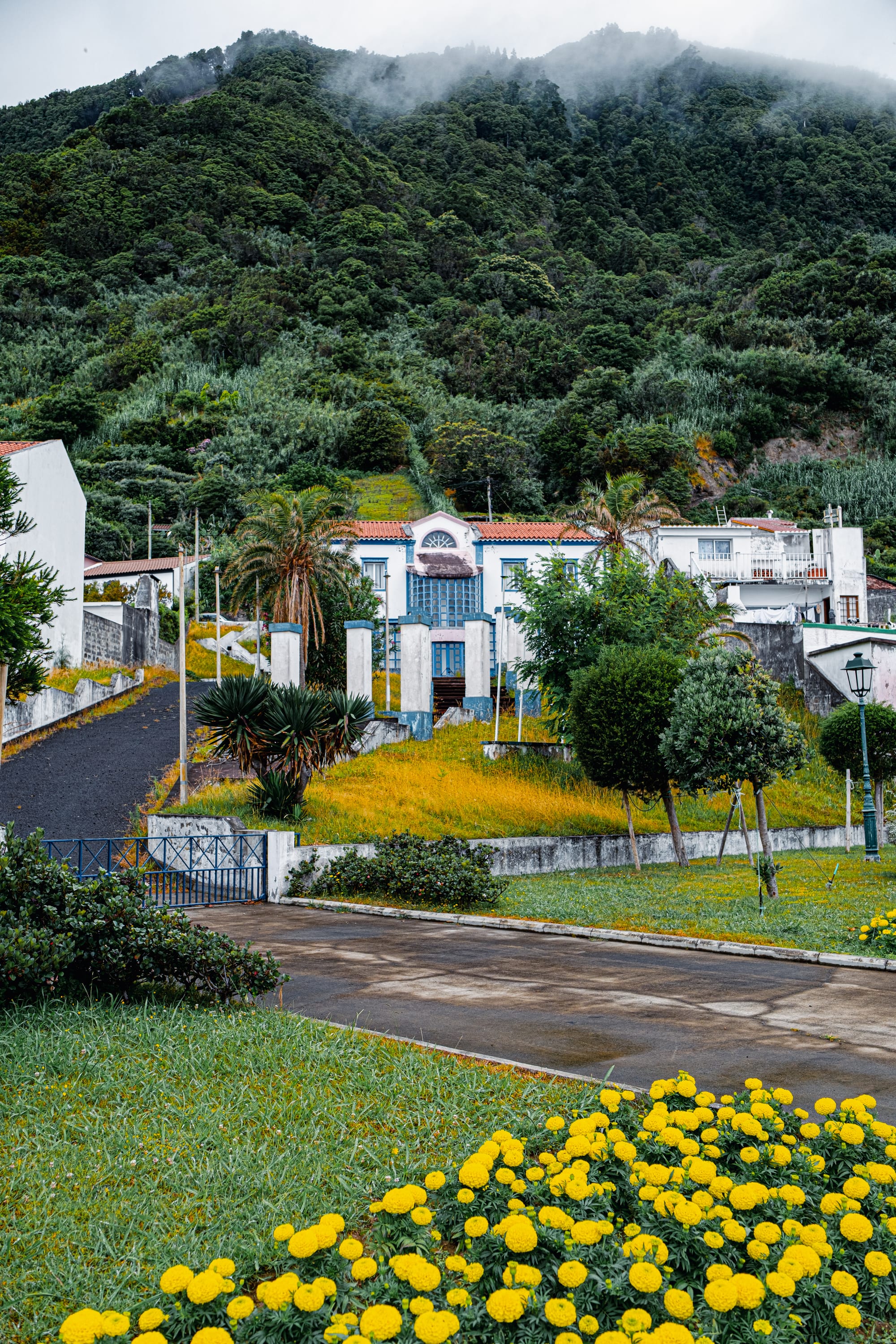
Black sand and golden bloom—Ribeira Quente’s quiet palette from coast to hilltop
It’s a fishing village at heart, but also something softer. There’s no bustle here. Just the hiss of sea spray, the chatter of birds, the occasional crackle of a grill, and the slow rhythm of waves landing on Praia do Fogo—a beach named for the geothermal heat that still rises beneath its dark, grainy sand.
Praia do Fogo and volcanic sand
Praia do Fogo is unlike most Atlantic beaches. The sand is fine-grained and volcanic, a deep charcoal grey that feels warm even in cool weather. When the sun hits it, you can see flecks of brown and bronze shimmering through. But what makes it unique isn’t just the color—it’s the temperature.
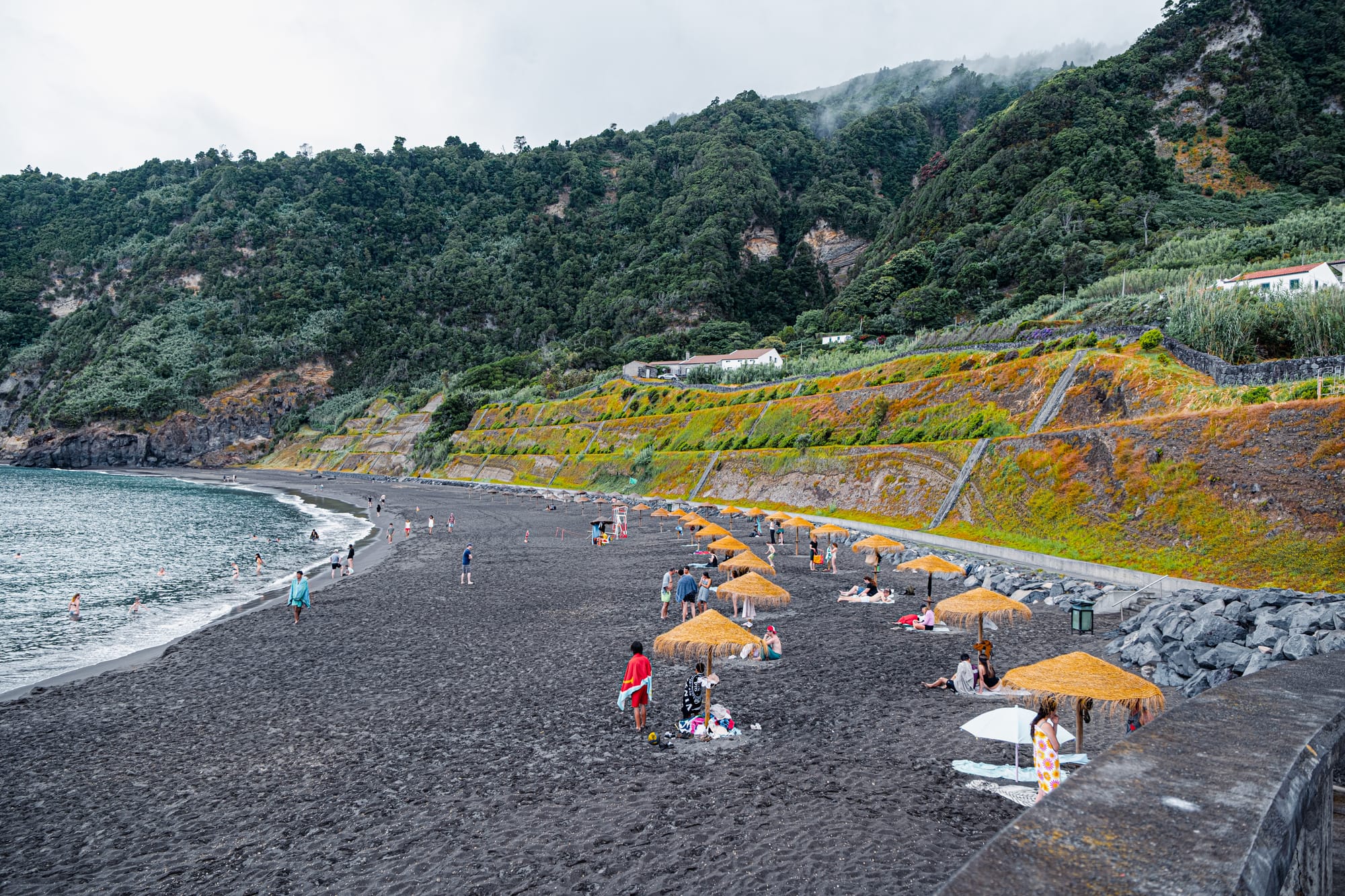
Geothermal activity continues under the beach surface, and you can feel the heat through your feet in certain places. Locals say that if you dig just a few centimeters down, the sand turns hot to the touch. The water here is calm and swimmable, especially in summer, and the cliffs surrounding the cove soften the wind.
At one edge of the beach, near a short set of stairs, you’ll find a small restaurant perched above the sand. This is where we stopped for lunch—a vegan pizza made without cheese, topped with Azorean pineapple. Simple, hot, and crisp, with that almost floral sweetness of island-grown fruit.

The view looked directly over the ocean, and the breeze smelled of salt and roasted crust.
A town of blues and whites
The houses in Ribeira Quente are low and light, most of them painted white with blue trim. Some feature mosaic tiling along the base, others small balconies draped in laundry.
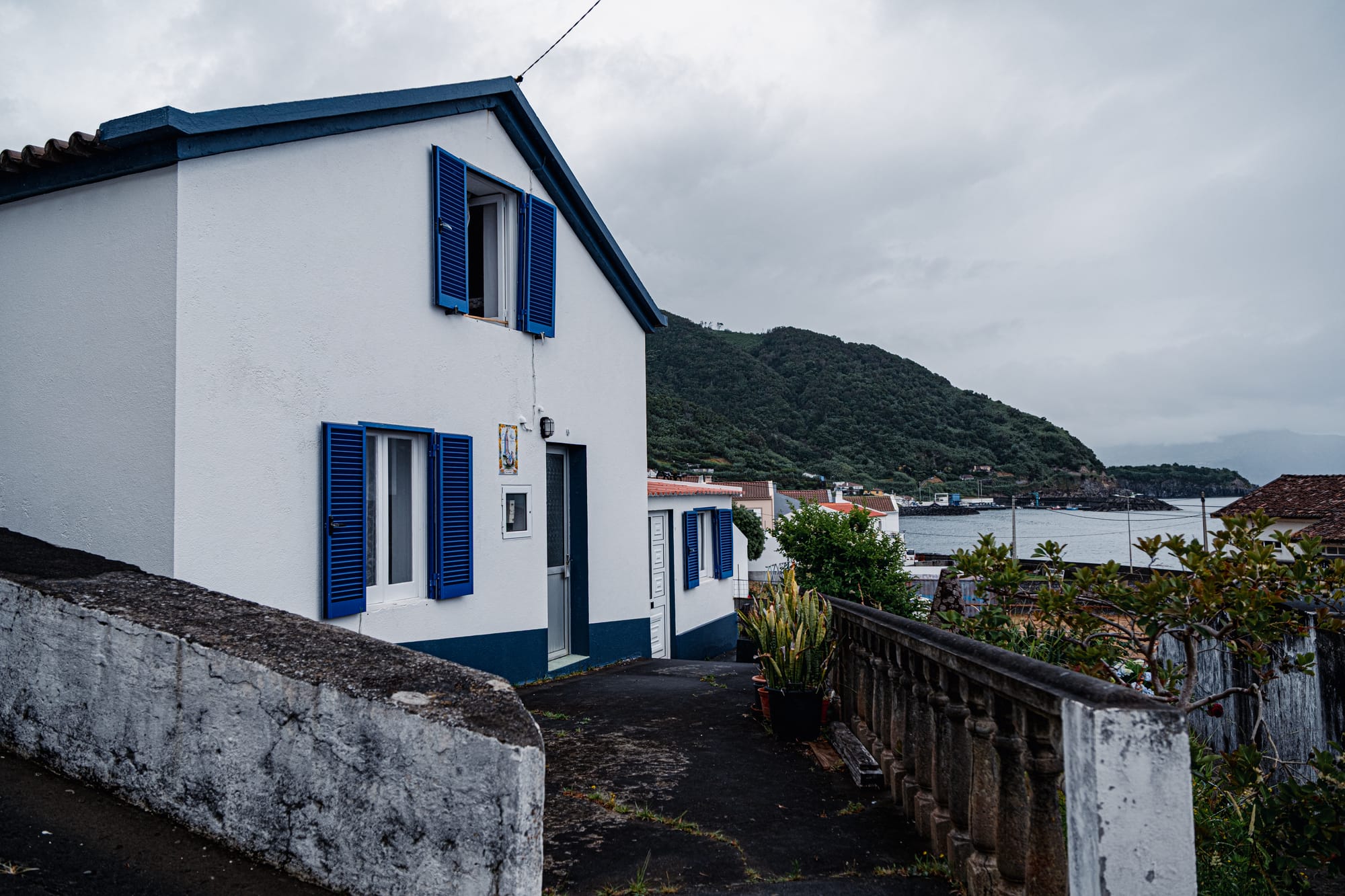
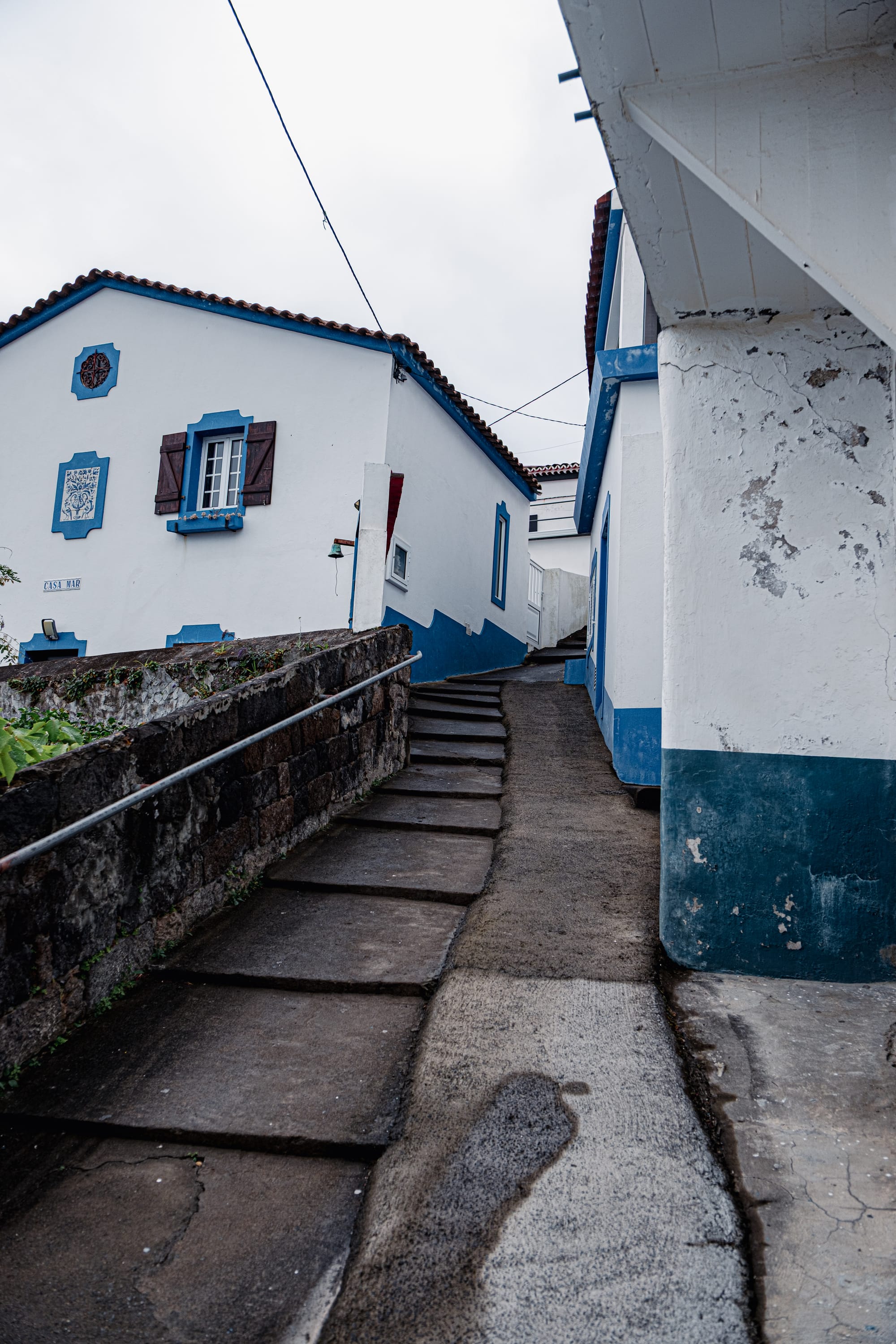
Tiled shutters, damp stone, and sea glimpses tucked between Ribeira Quente’s quiet backstreets
Near the center of town, we passed a string of sunflowers bursting up in a garden.
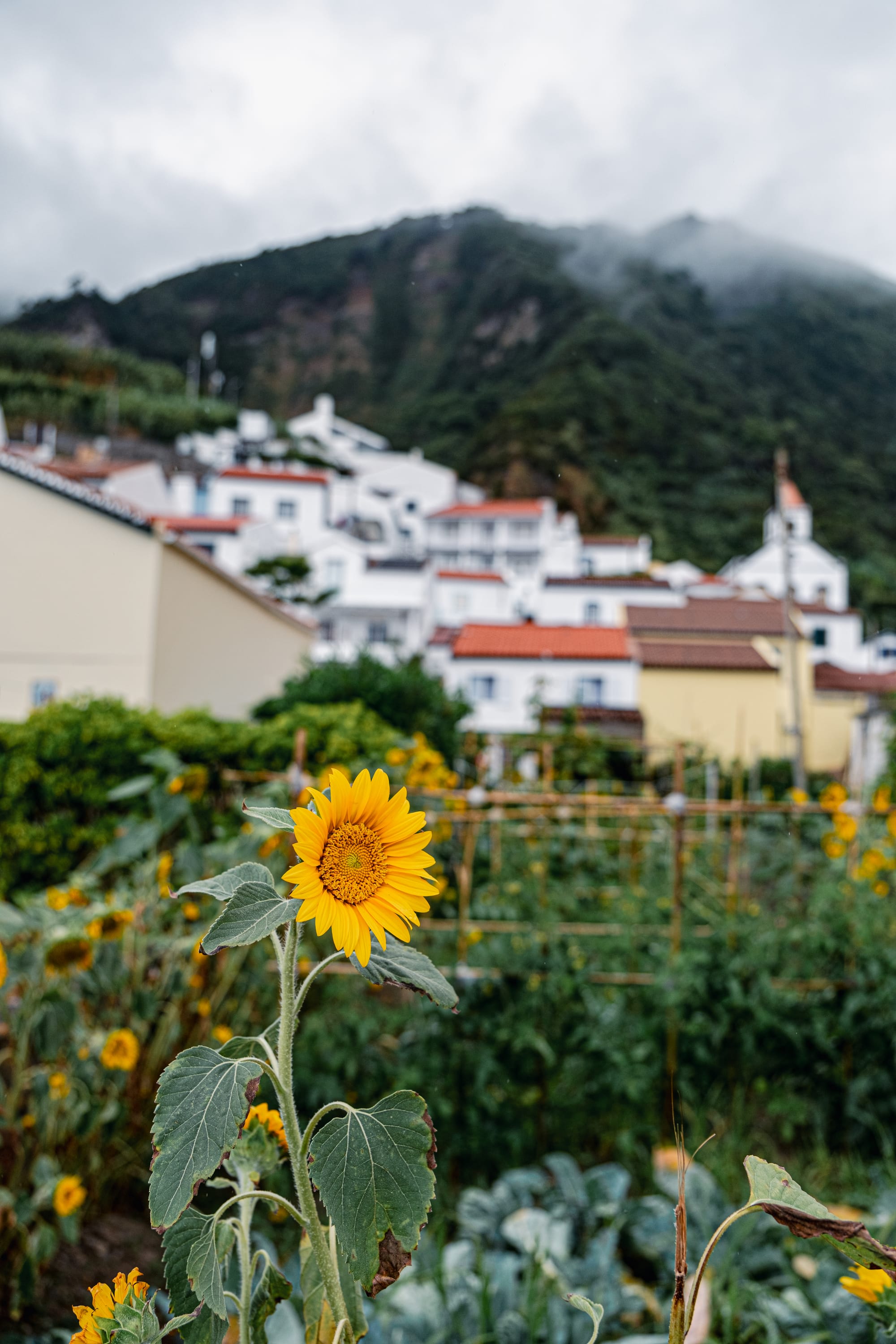
There’s a small church set slightly uphill—whitewashed, with a tiled roof and bell tower.
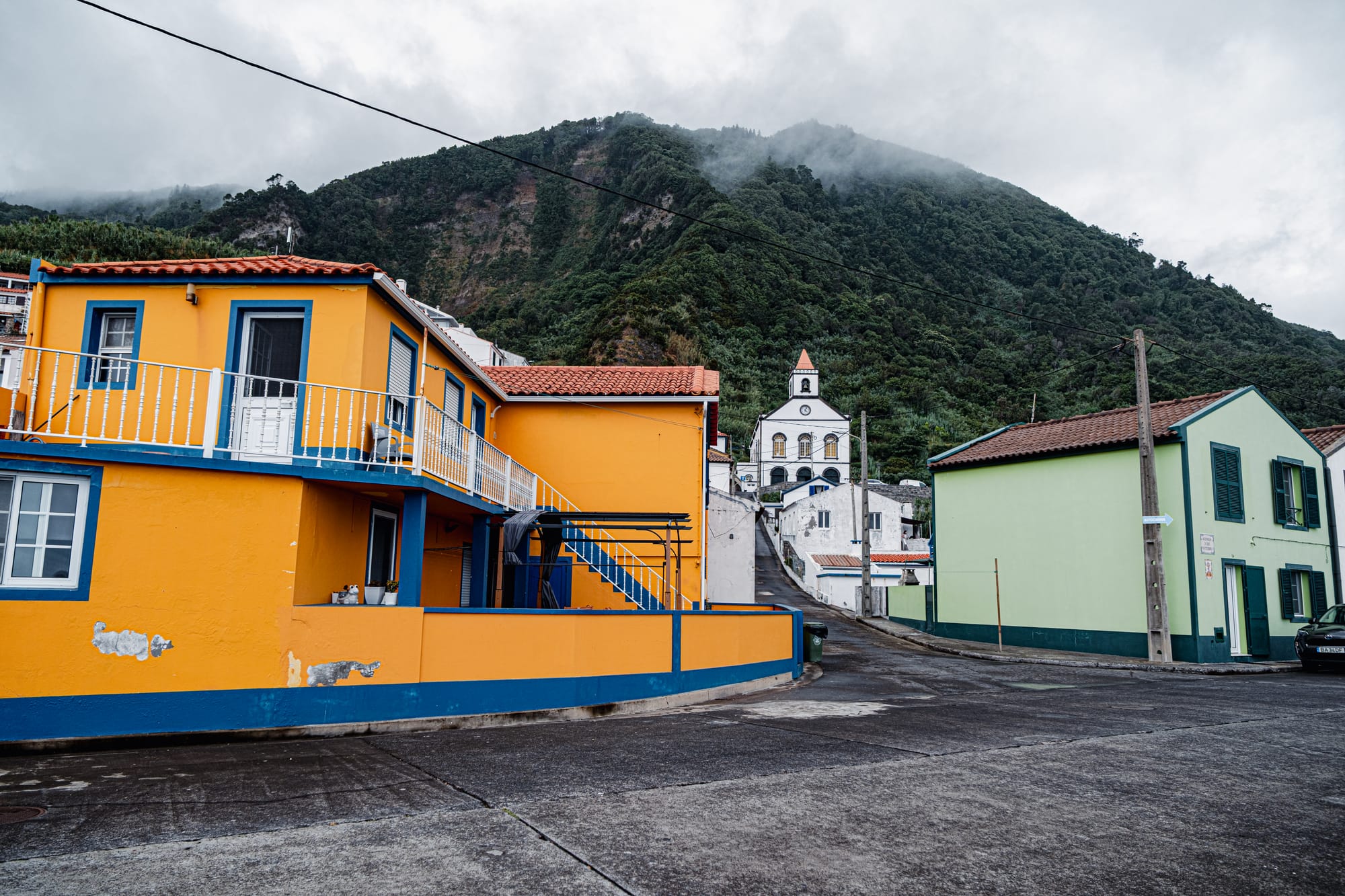
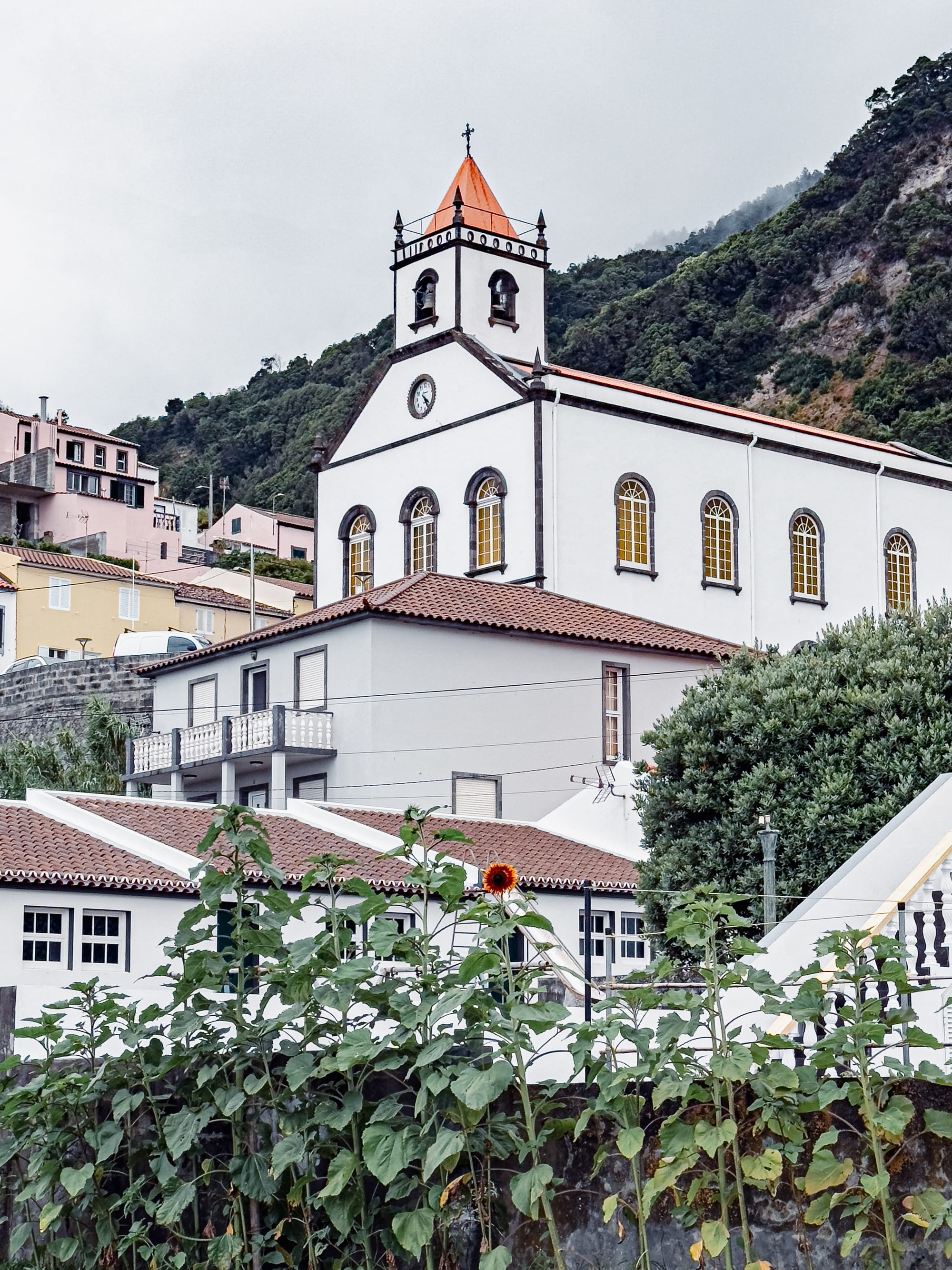
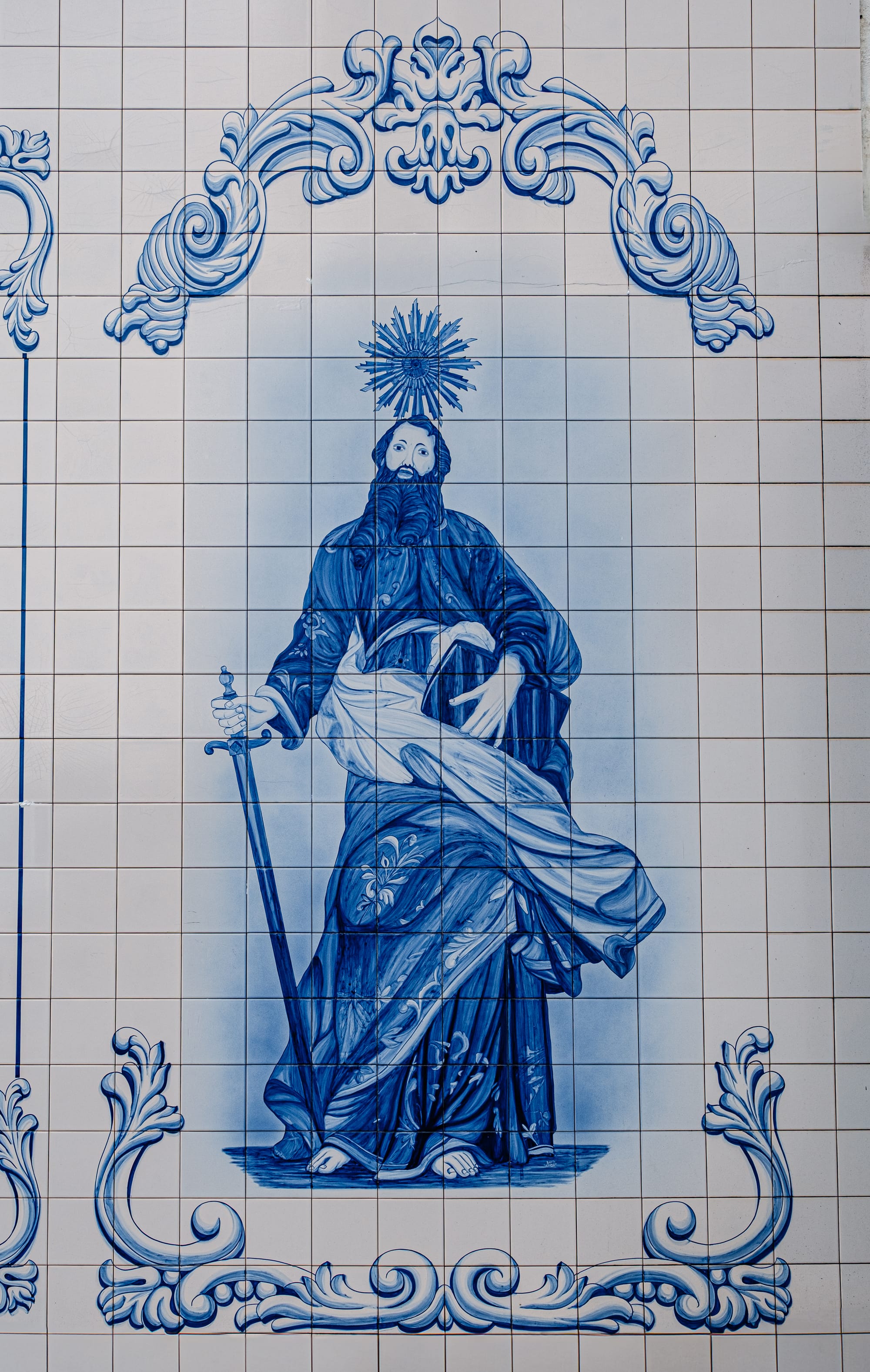
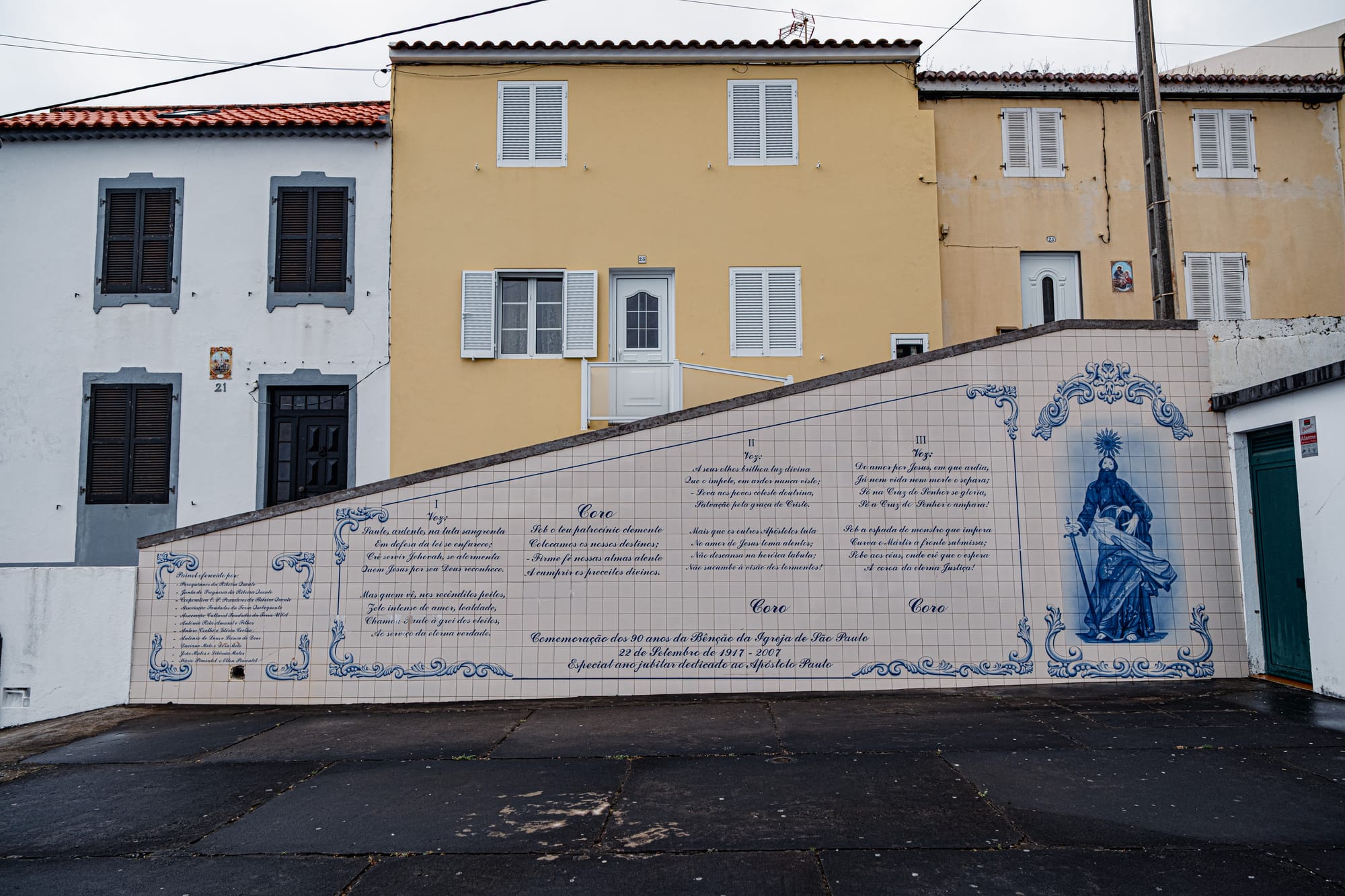
The church rises above bold façades and blue tile saints, steady in the mountain fold
A lone bright house stands out amongst the usual white ones.
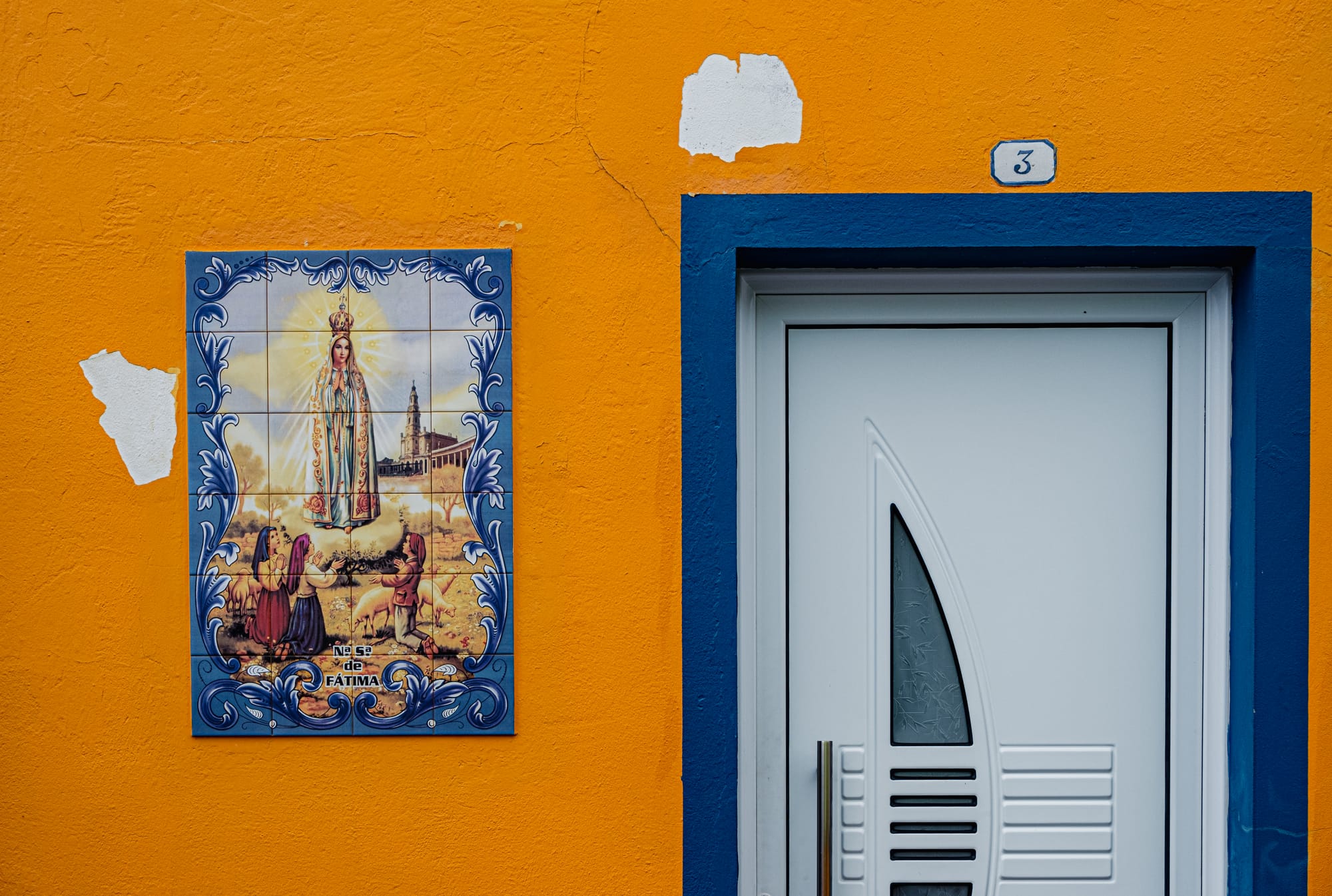
It’s a town built at a soft scale. Paths twist along the stream that runs through the middle of the village, with bridges on either side.
You’ll see small boats stacked along the roadside, lobster traps resting beside porches, and dogs sunbathing at the edge of driveways.
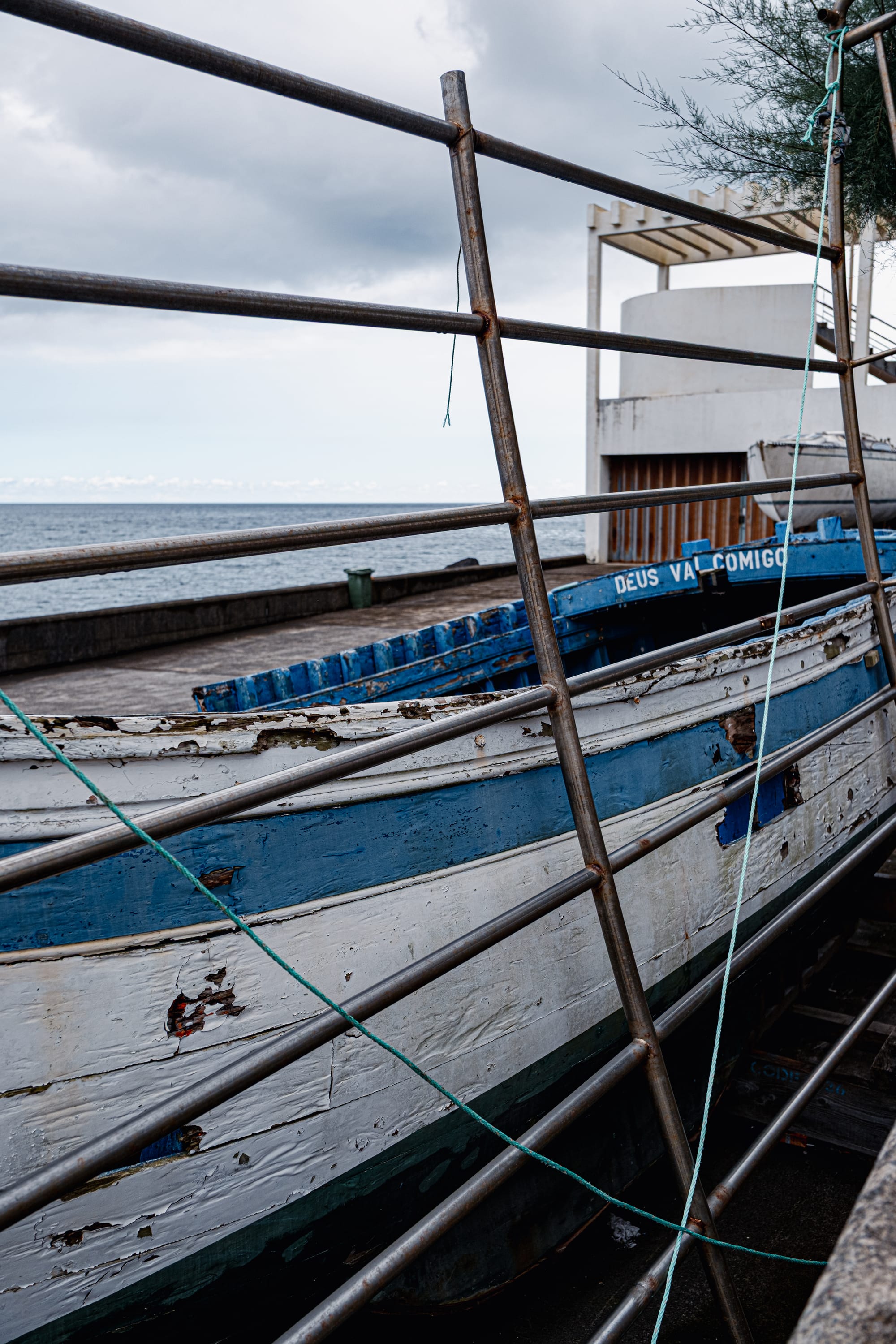
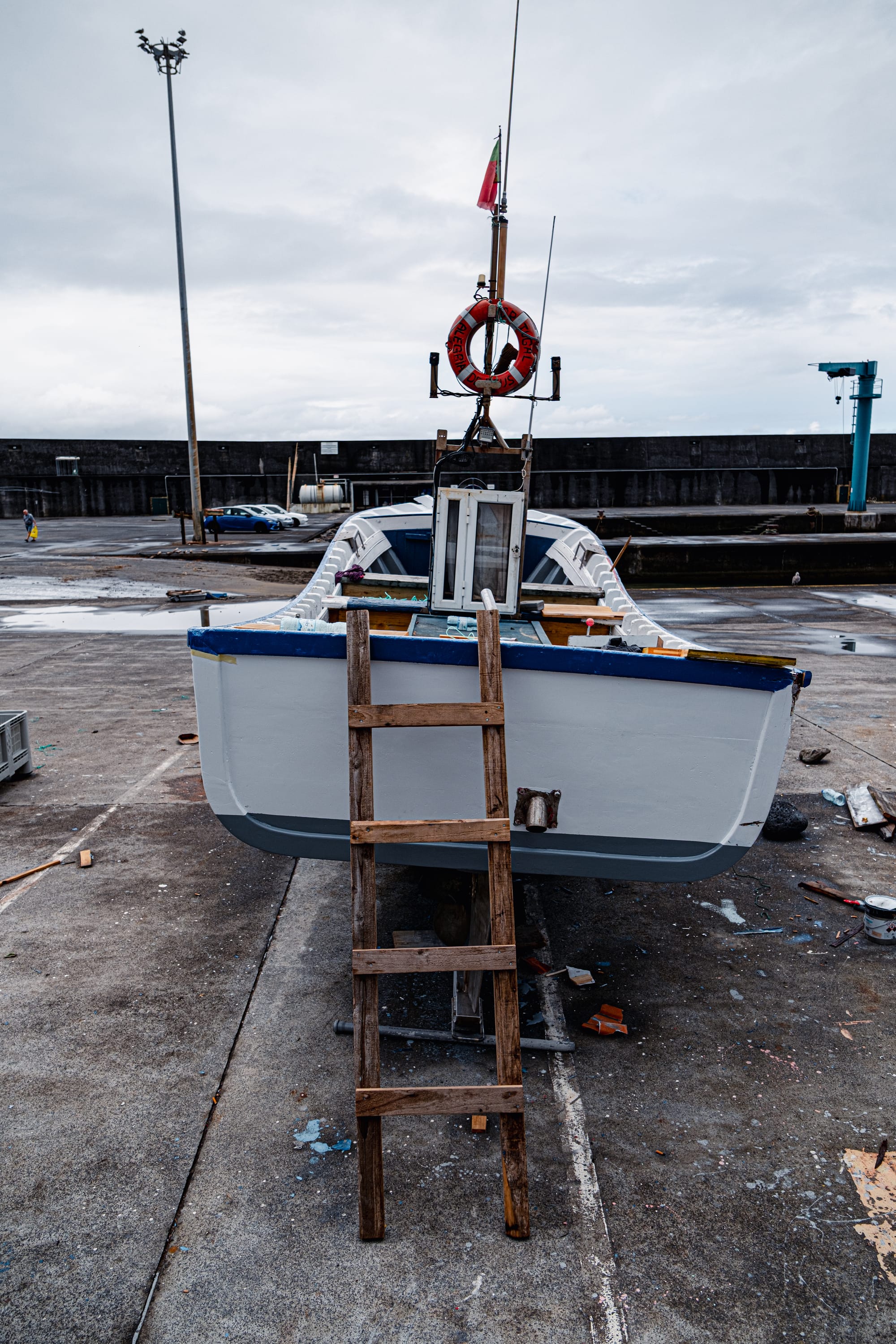
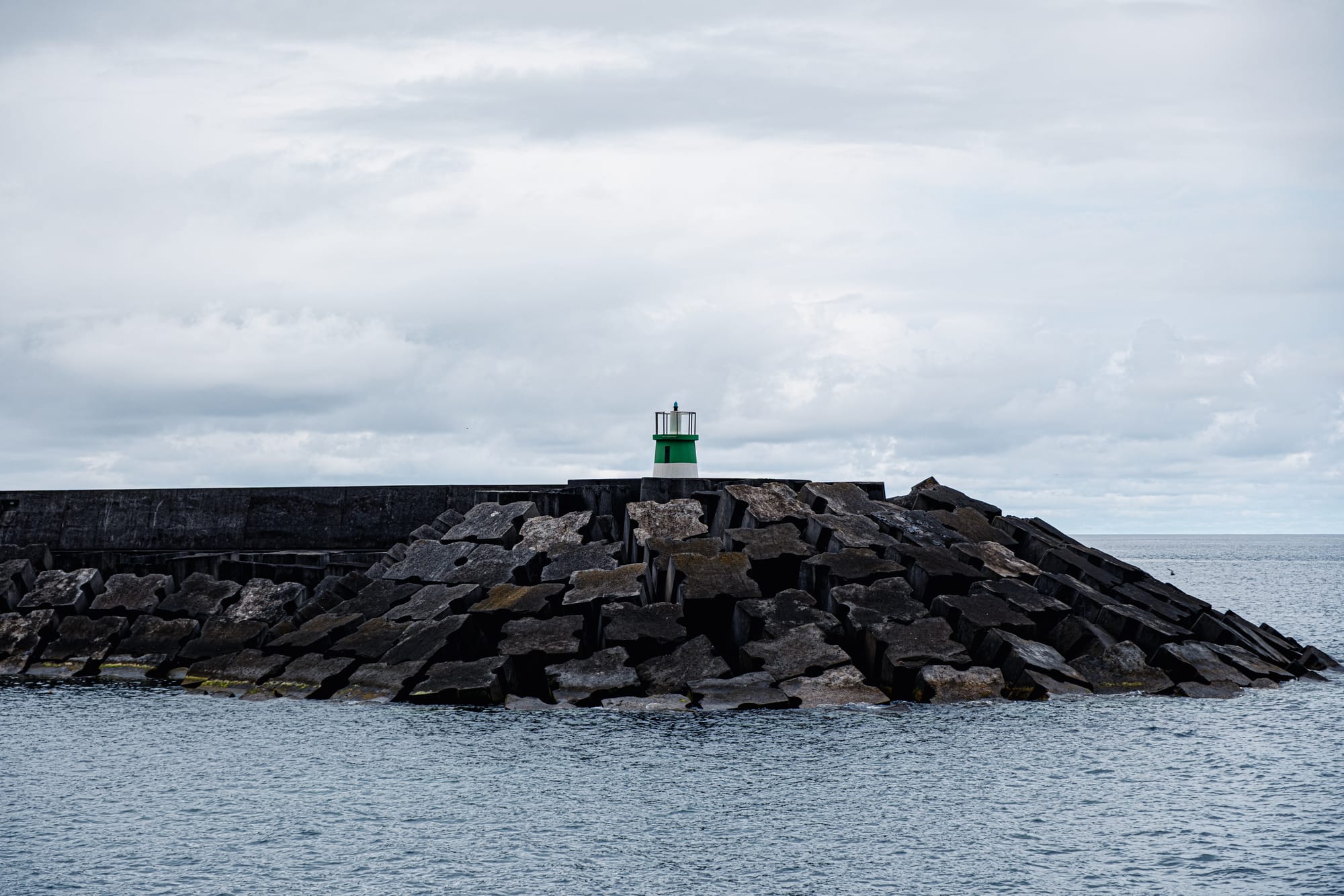
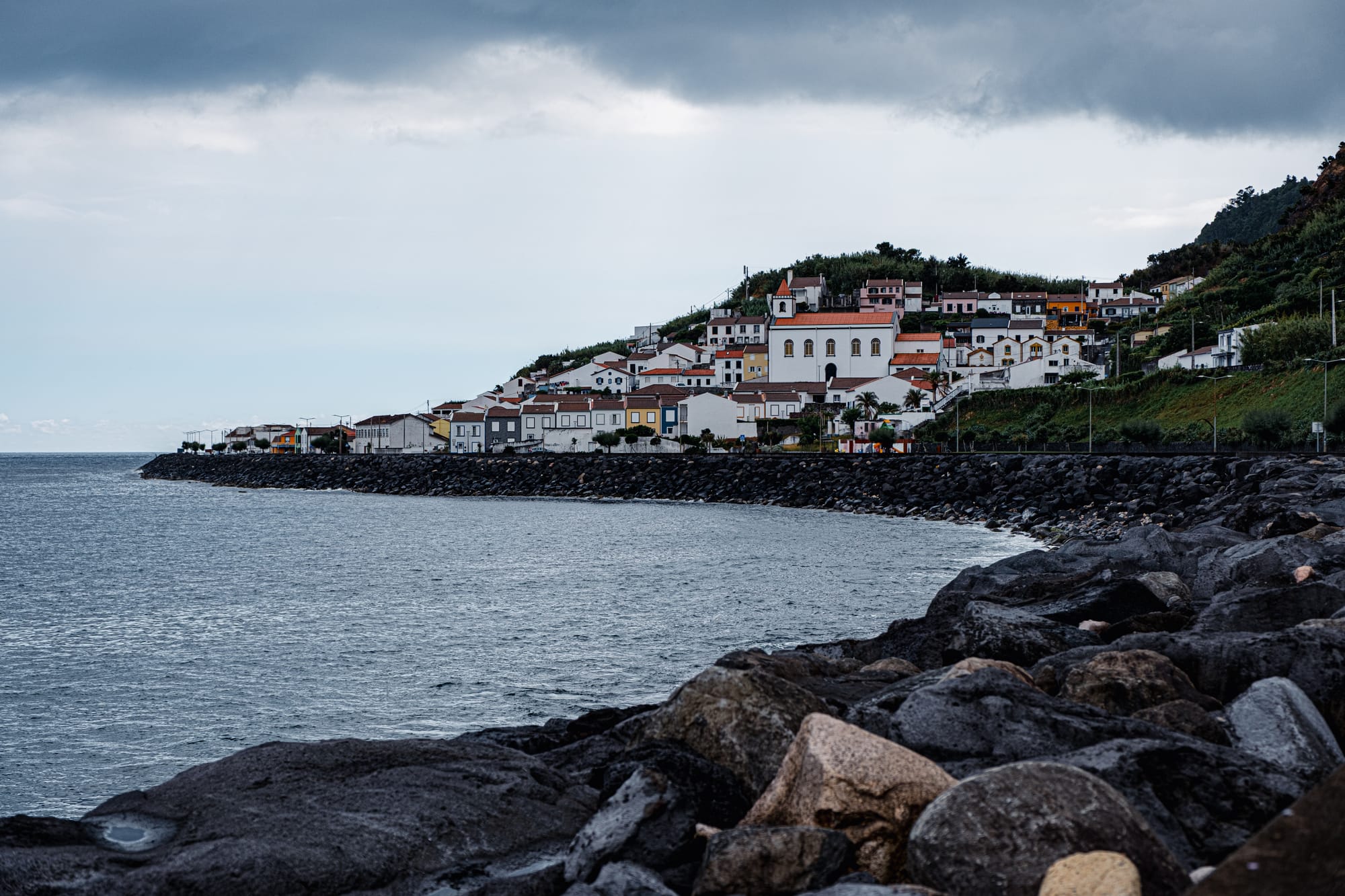
Fishing boats, salt-worn breakwaters, and a quiet harbor curve into Ribeira Quente’s edge
The port area, while small, is lively. You’ll find nautical ropes, rusted anchors, fresh paint on boat hulls, and a quiet sense of routine. The sea here feels close but not encroaching.
Kima and thermal corn
No visit to Ribeira Quente—or São Miguel, for that matter—is complete without trying a cold bottle of Kima. It’s a passionfruit soda unique to the Azores, made locally by a small factory in Ponta Delgada. It’s sweet, tart, lightly fizzy, and best served very cold. We picked ours up from a small kiosk near the beach.
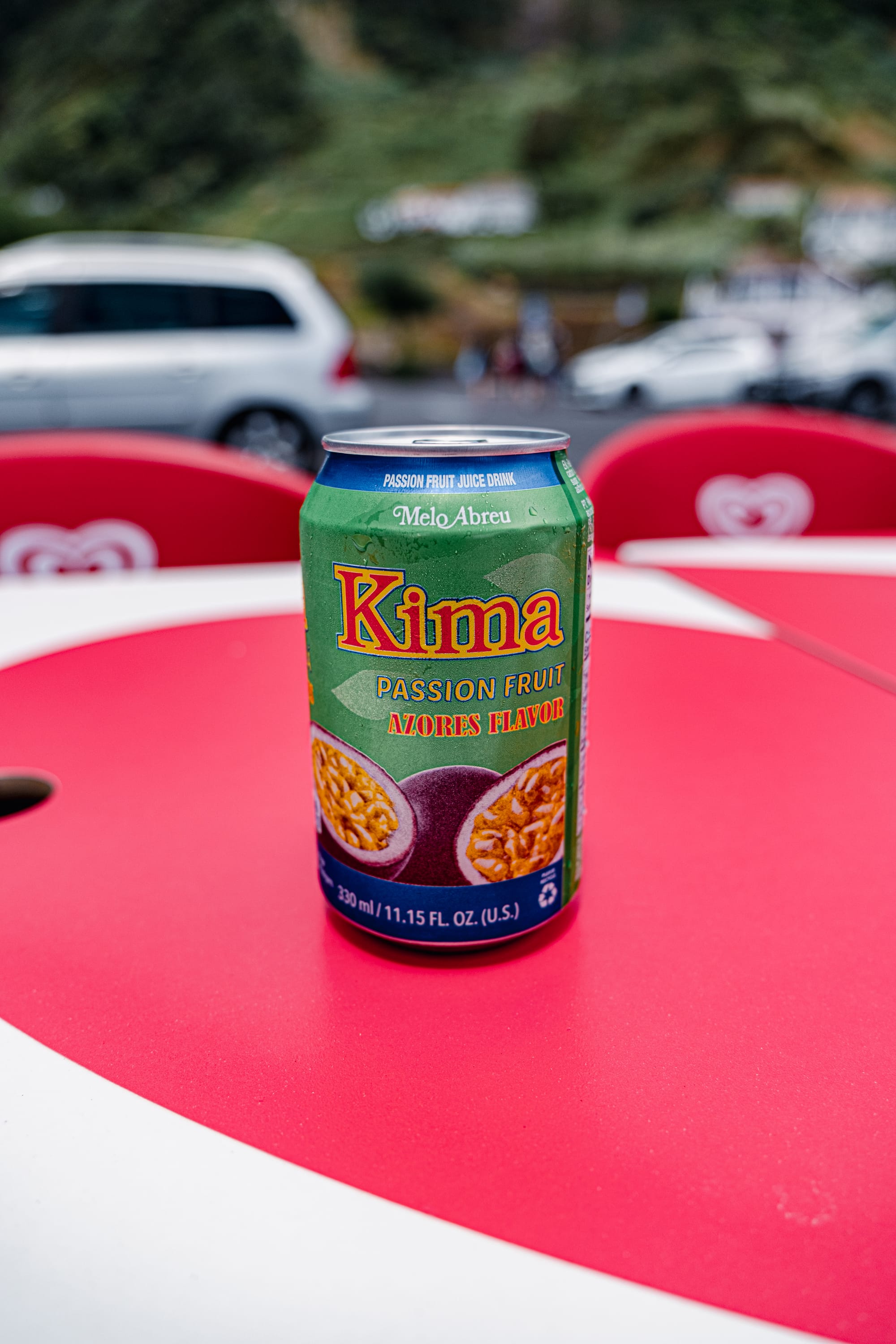
We also stumbled upon a man selling thermal corn. The corn is boiled in water heated directly by underground geothermal activity. It comes wrapped in its husk, warm to the touch, slightly sweet, and perfectly tender.
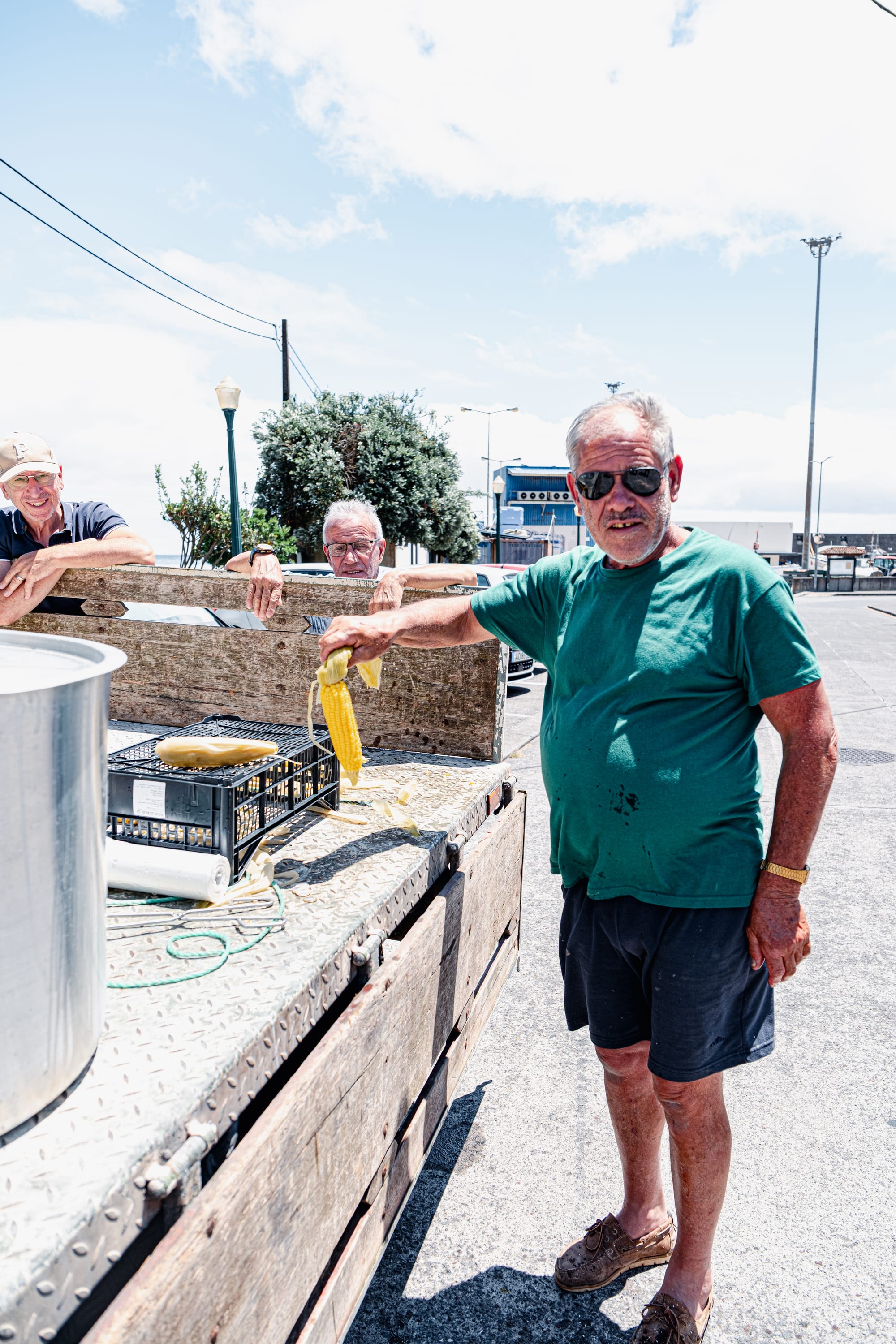
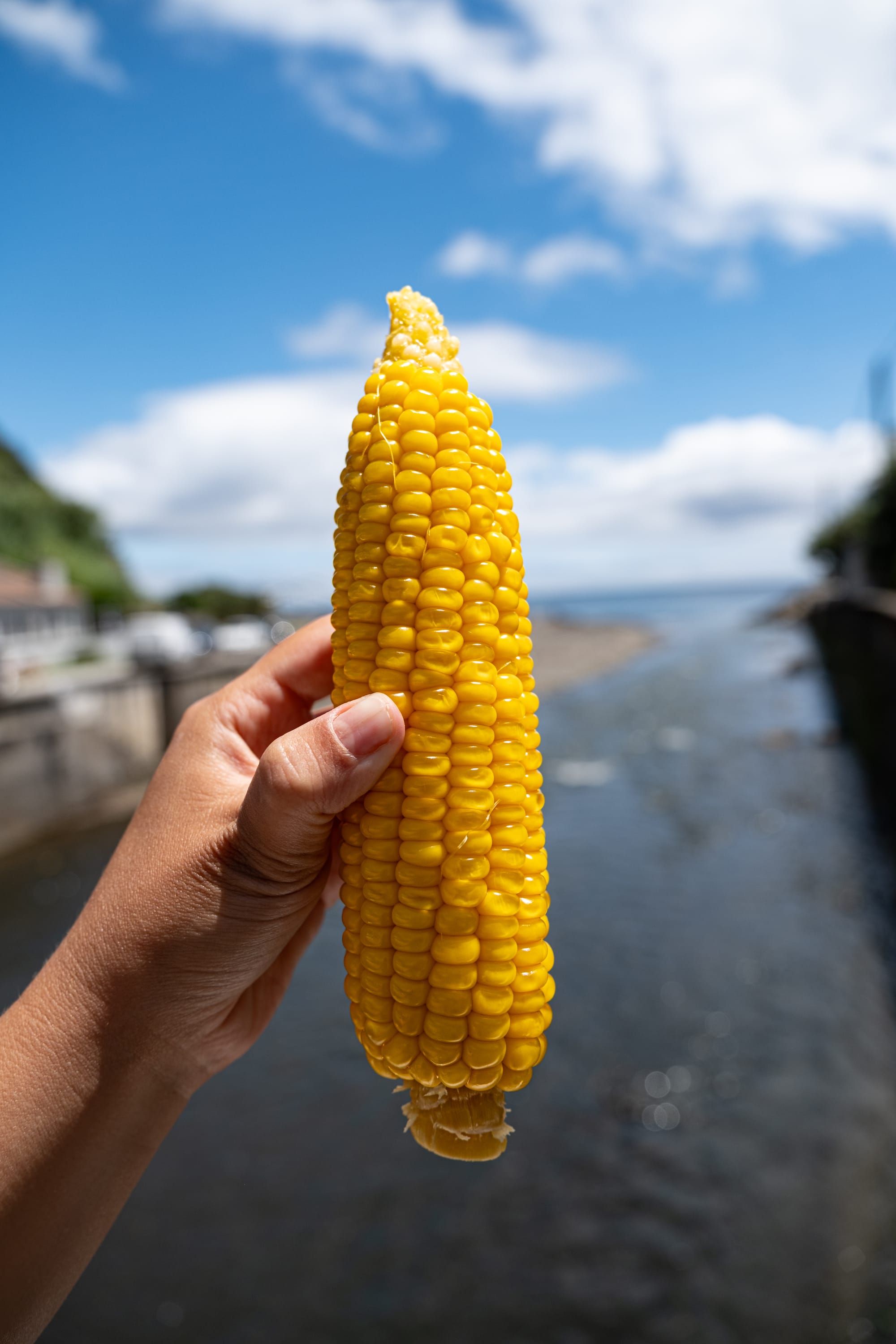
Thermal corn served from the back of a truck—steamy, tender, unforgettable
There’s a subtle earthiness to it that’s unlike anything from a stovetop. Eating it with one hand, sipping Kima with the other, sitting on a shaded bench—it’s a full sensory scene.
Walks and edges
Ribeira Quente is small enough to walk end to end in an hour, but it offers more texture than its size might suggest. Behind the church, narrow lanes climb into green hills.
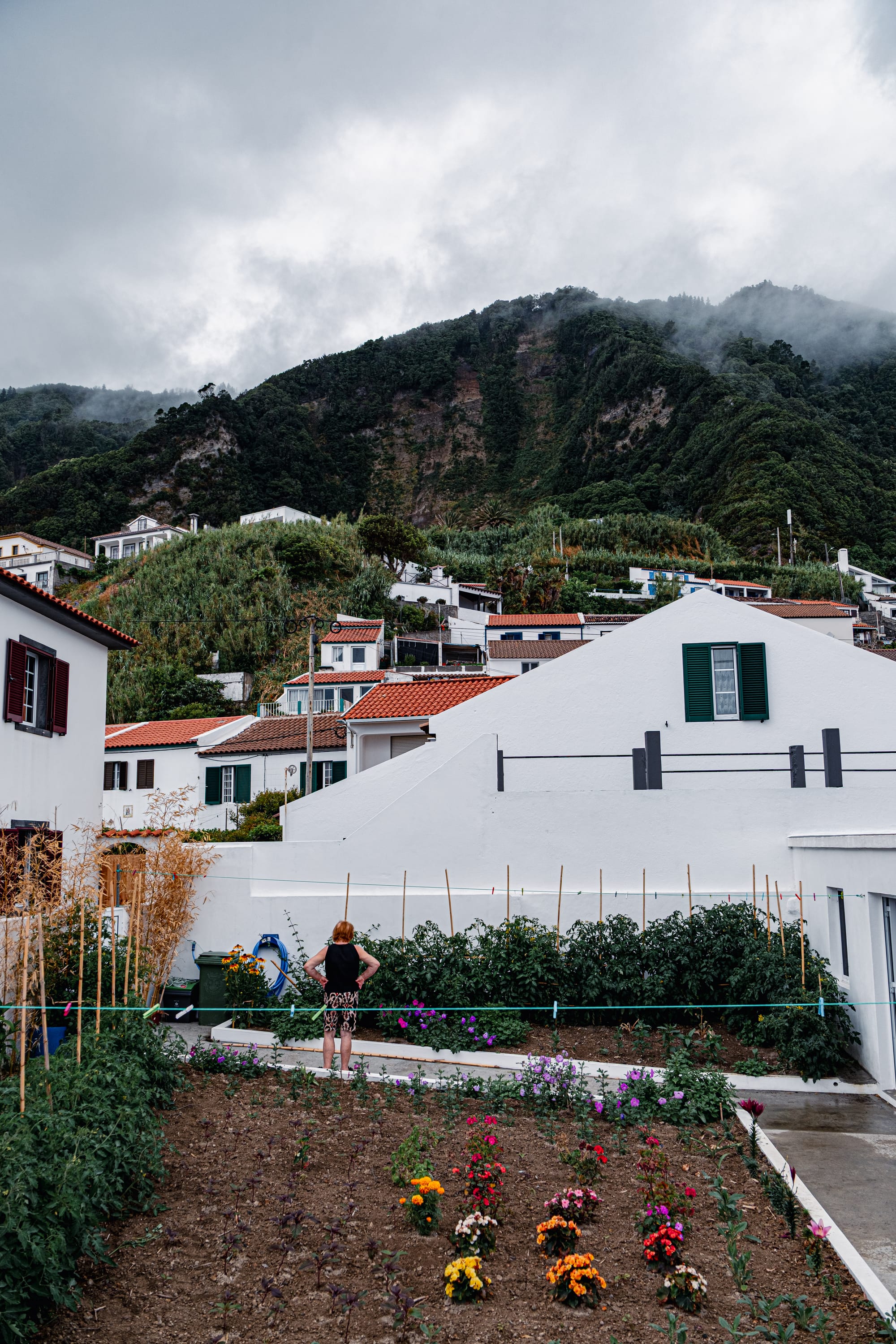
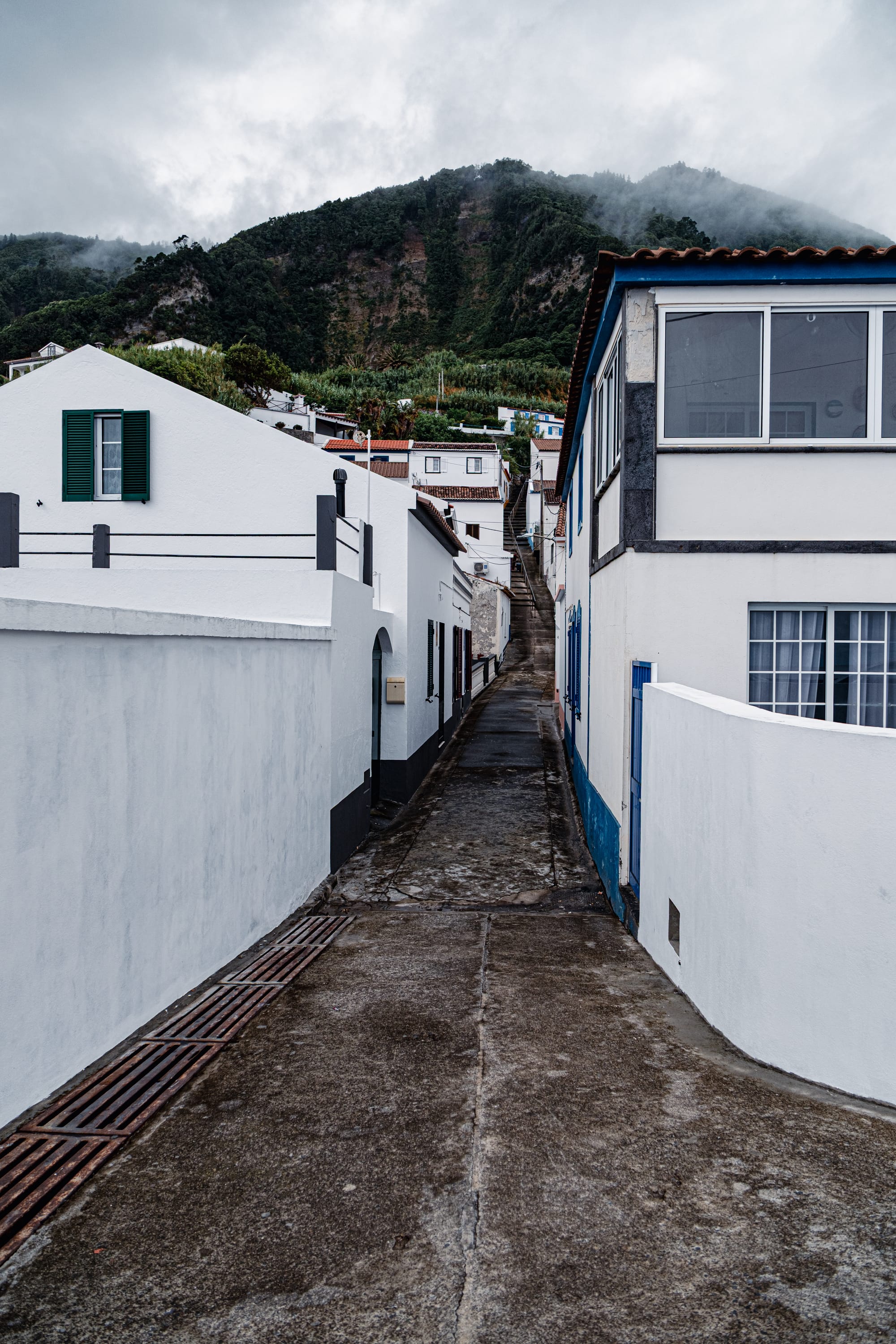
Whitewashed homes and narrow lanes nestled into the misty folds of Ribeira Quente’s hillside
Along the coastline, stone walls run beside iron fences. Near the port, a collection of metal sculptures—anchors, wheels, gears—sits like a casual museum of maritime memory.
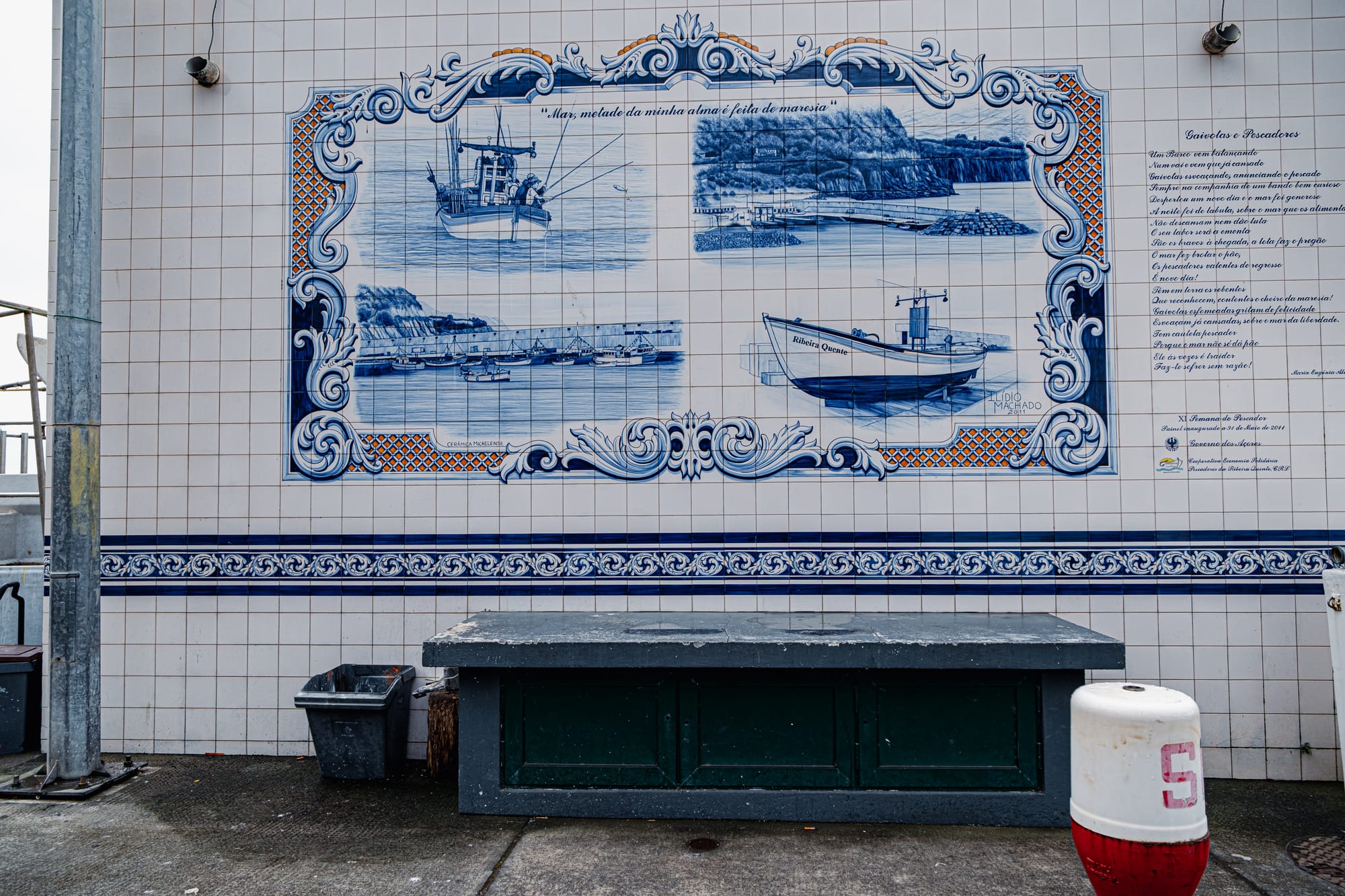
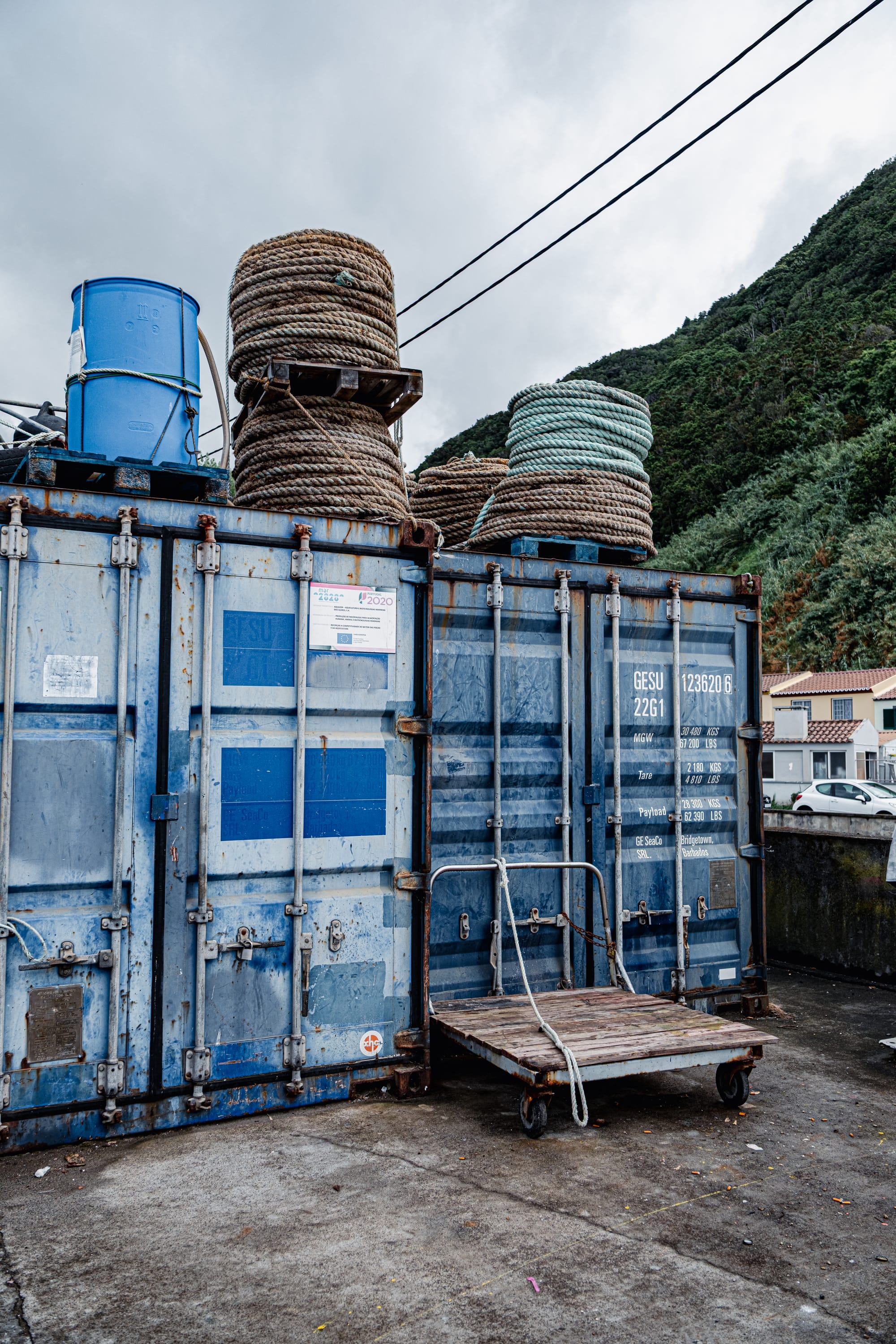
Maritime mural and fishing gear hint at Ribeira Quente’s enduring relationship with the sea
The smell shifts here: salt, then rope, then back to wet stone.
A town shaped by heat and sea
The name Ribeira Quente means "hot stream," a nod to the geothermal forces that still flow beneath and around the town. Historically, this was one of the island’s main fishing hubs, and many families still depend on the sea. In 1997, a devastating landslide reshaped parts of the village, and it has since rebuilt carefully, with protective walls and improved infrastructure. But the scale and character remain intact.
You’ll find details in the visuals—like the bold azulejos that reference maritime history, or the flowerbeds blooming with tropicals and the distinctive spikes of blooming succulents.
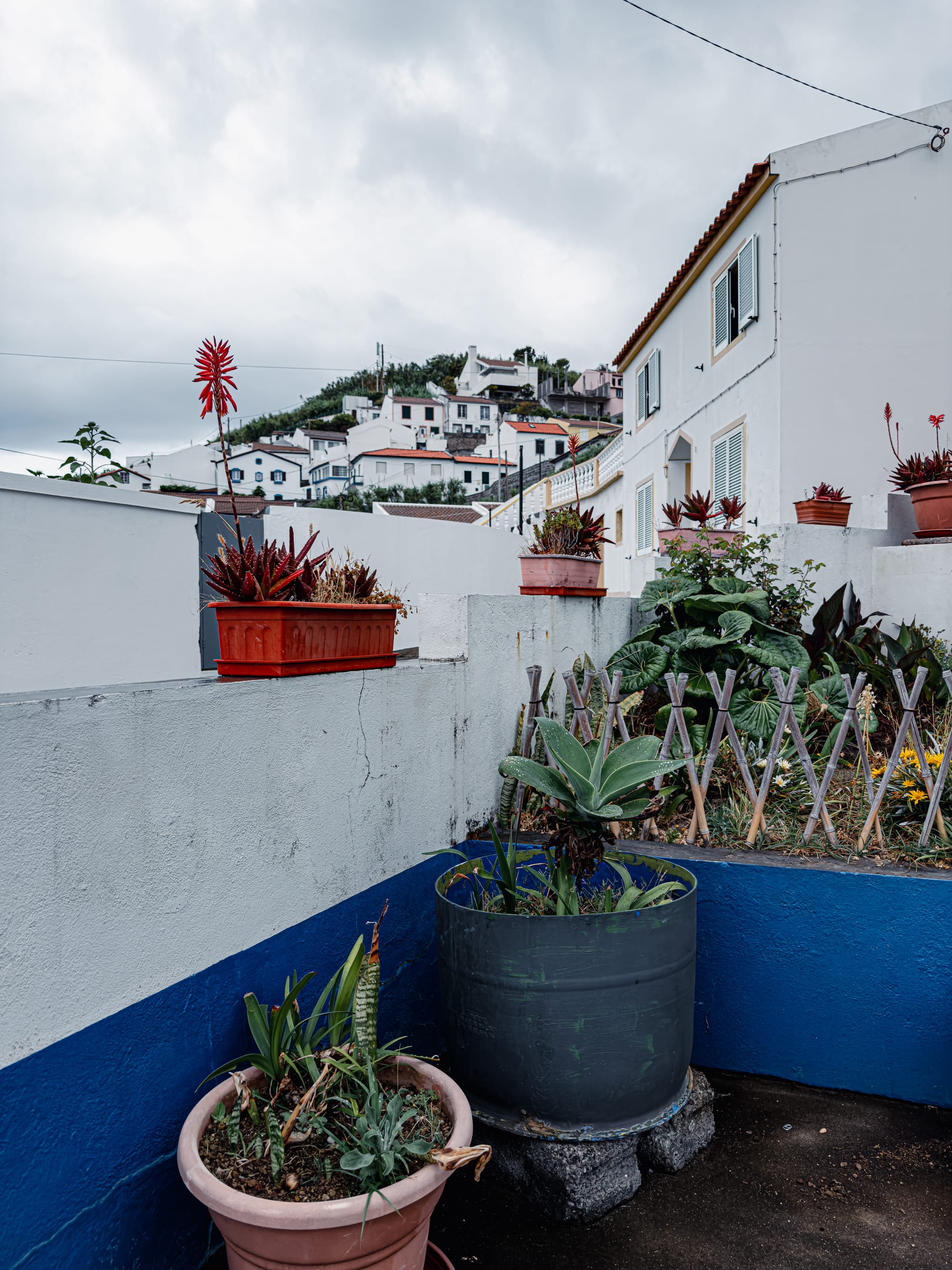
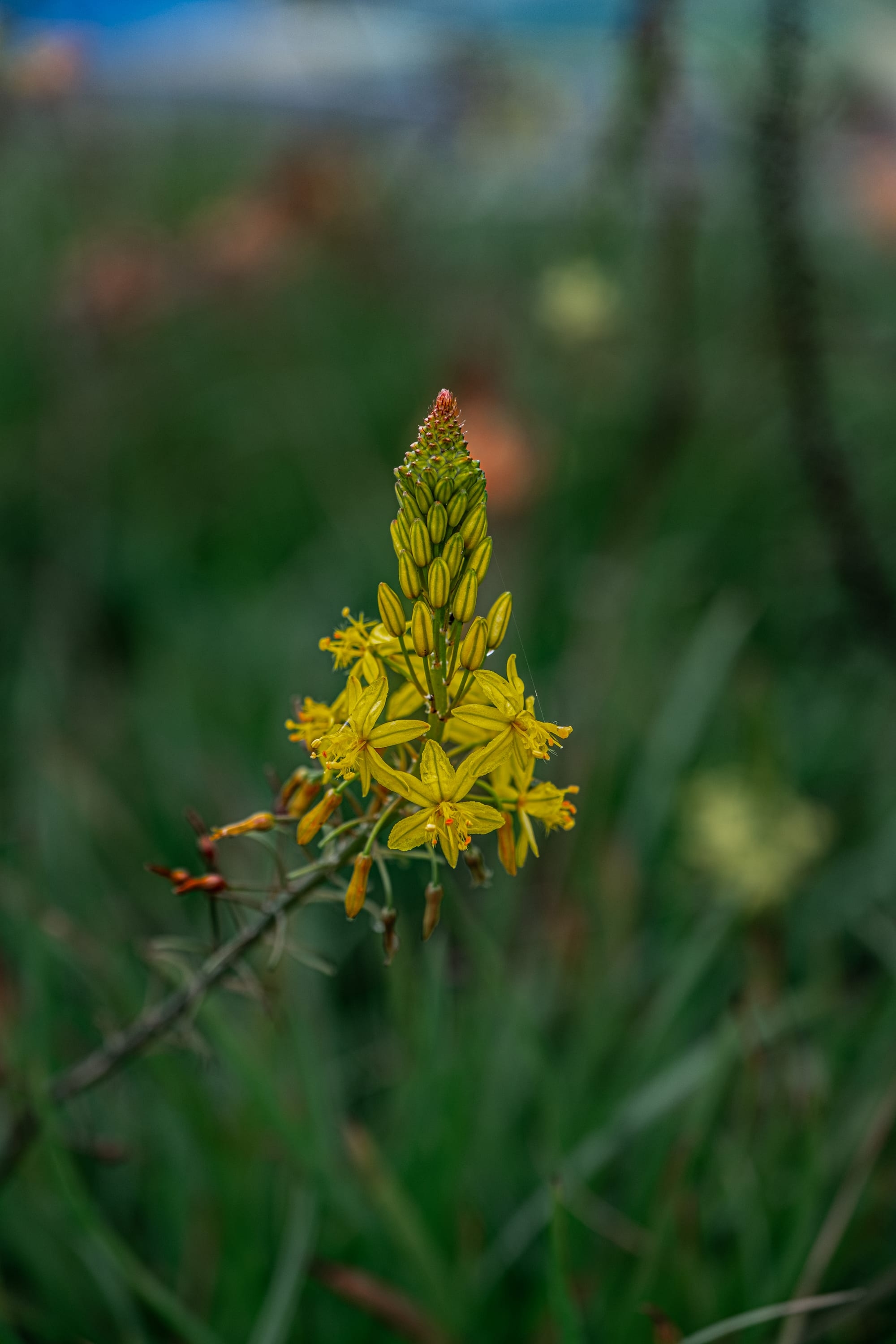
Container gardens and wild blooms echo the island’s improvisational, sun-soaked botany
The view from the beach looking back into the village reveals homes layered up the hillside, rising in rows like waves themselves, edged by dense green.
Practical notes
Ribeira Quente is about a 15-minute drive from Furnas, accessible by a winding road that drops through dense forest. The descent is beautiful and cinematic—cliffs to one side, forest canopy overhead. Parking is available near the beach and is generally easy to find, especially on weekdays.
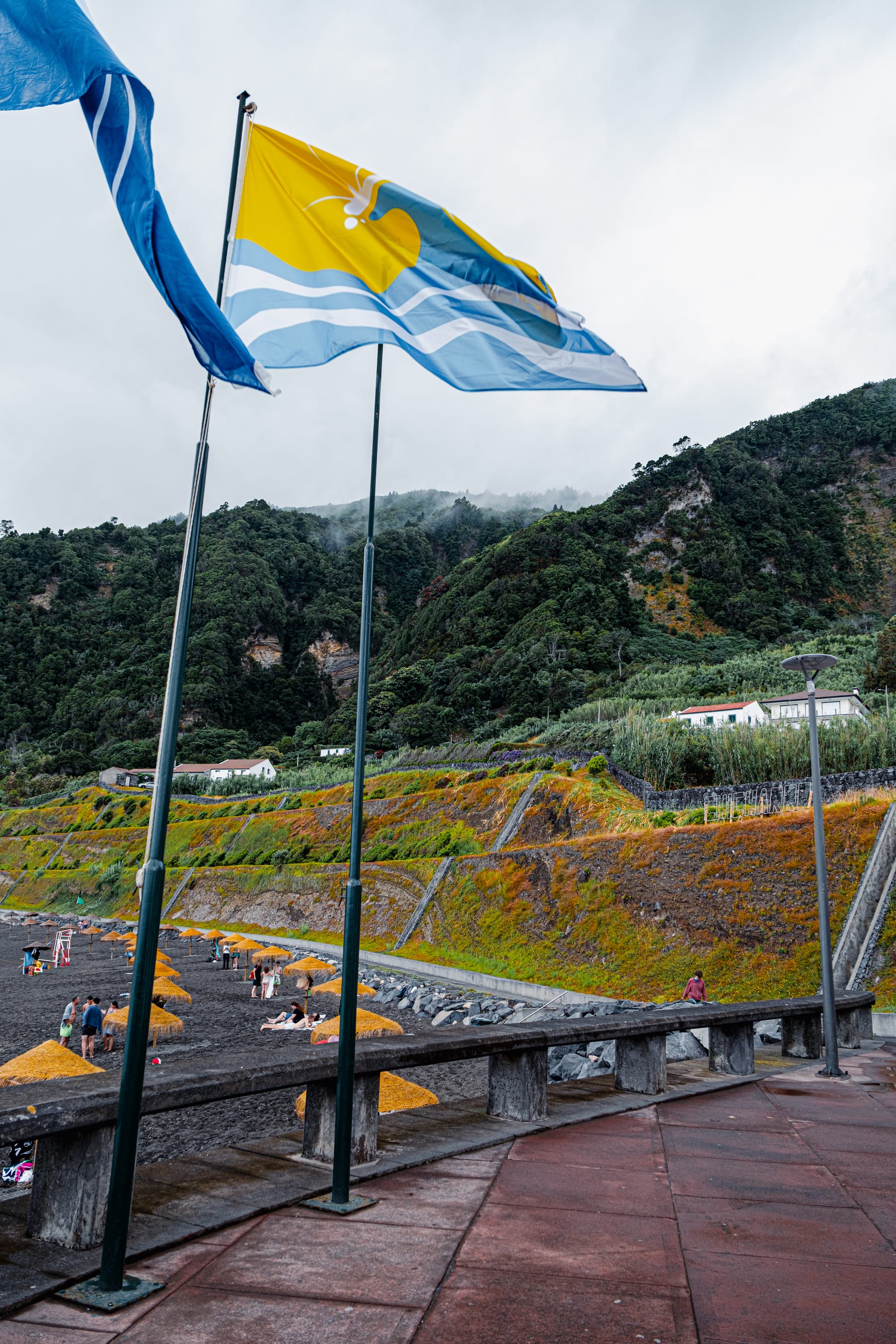
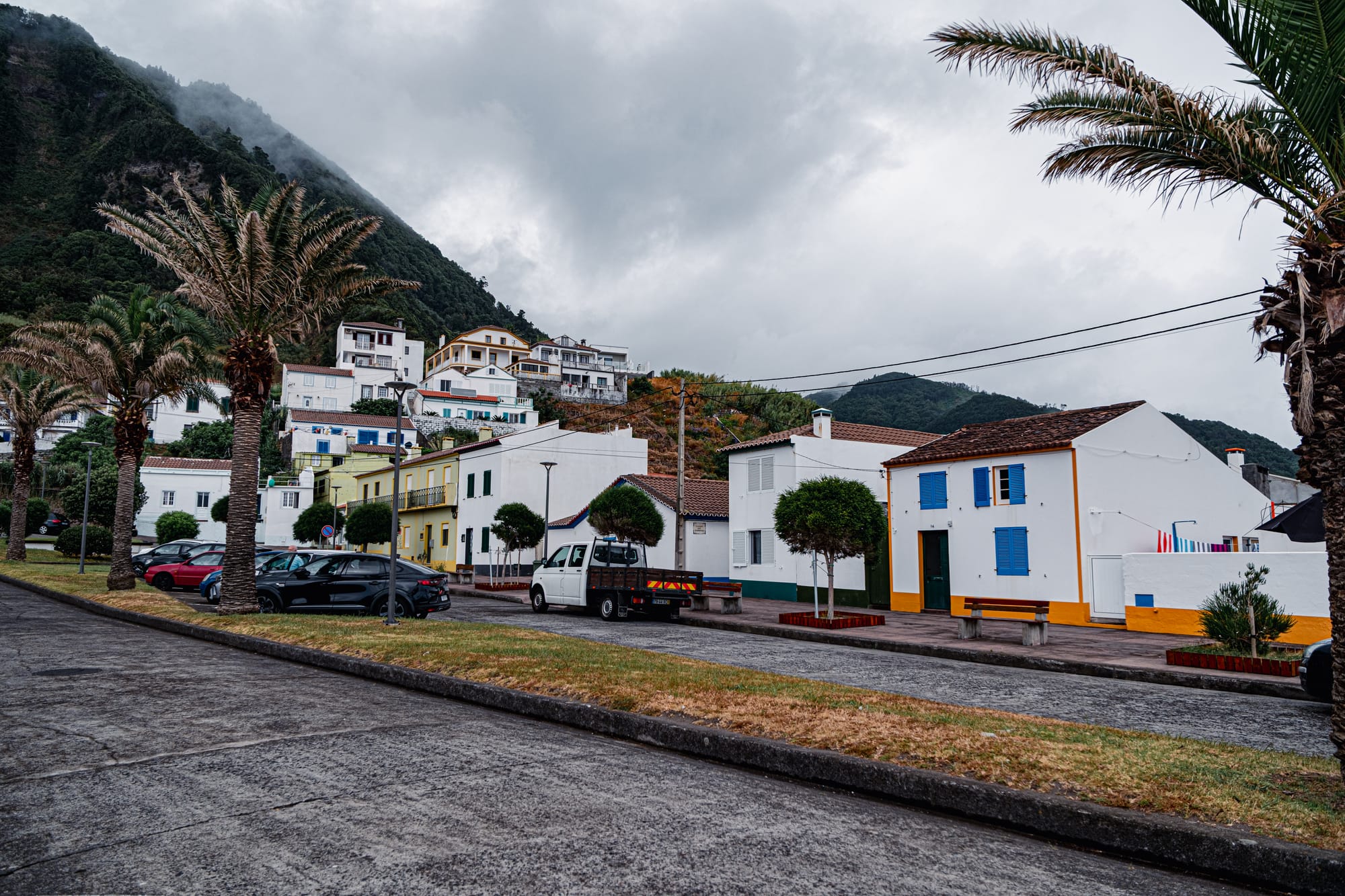
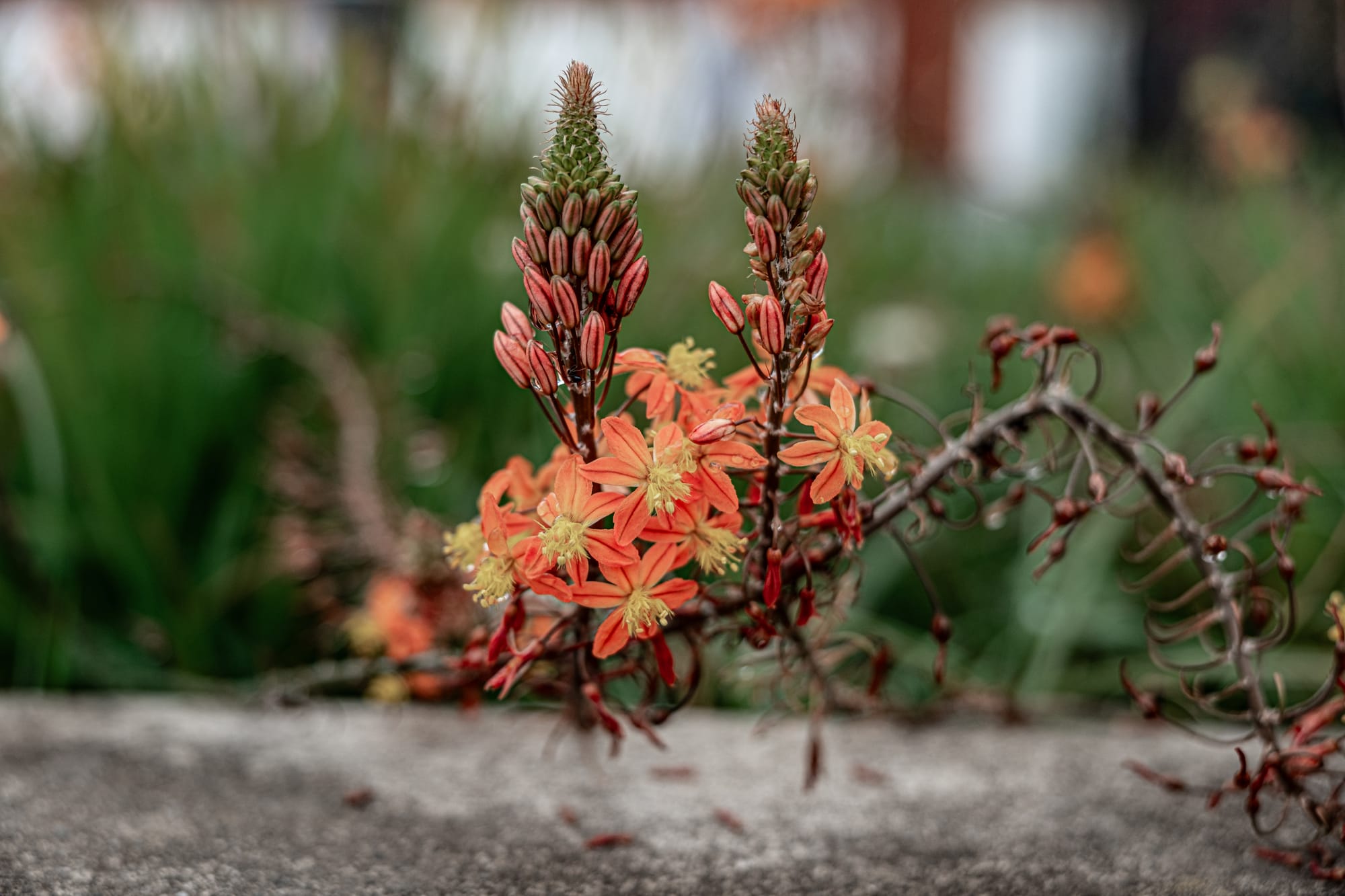
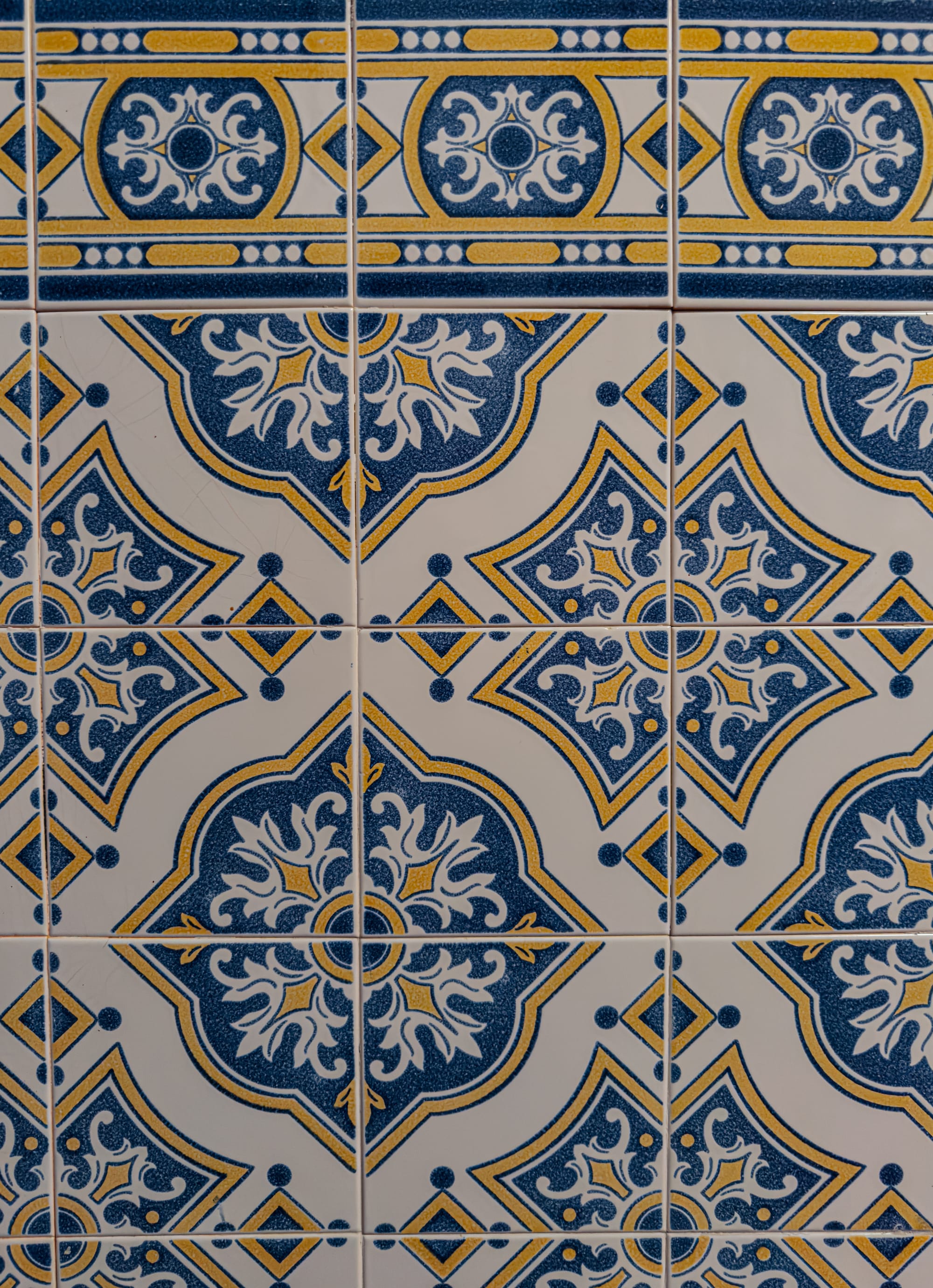
Waving flags, blooming tiles, bright façades—Ribeira Quente’s palette is always in motion
Be sure to bring a towel, water, and sun protection. The volcanic sand retains heat, so if you’re sensitive, it’s worth packing footwear for the beach itself.
Ribeira Quente is a place for an afternoon: swimming, sitting, wandering, tasting. The colors are a little brighter here, the shadows a little softer.






